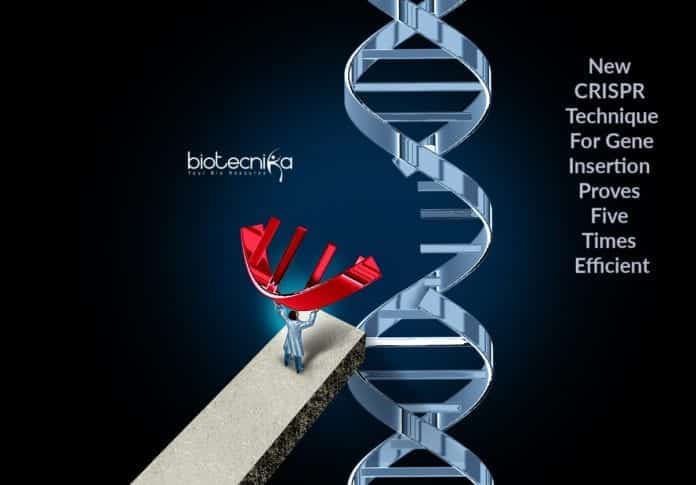New CRISPR Technique For DNA Insertion Proves Five Times Efficient
The researchers from the University of Illinois achieved the highest rate of gene insertion into human cells using the CRISPR-Cas9 gene-editing system, which was the greatest challenge in CRISPR based clinical gene therapy.
This new CRISPR technique for gene insertion involves the chemical modification of the ends of DNA to be inserted. It is five times efficient than the current approaches. They tested the technique in human kidney cell lines and saw 65% insertion at one site, which was previously 15%.
Nature Chemical biology published the research led by Huimin Zhao, chemical and biomolecular engineering professor at the University of Illinois.
Although CRISPR is being widely used for knocking out or turning off genes, it was not an efficient tool to knock in or insert a gene in human cells.
An efficient gene knock-in method is critical for gene therapy applications and basic biological research to study the gene function. A good knock-in method enables the labeling of genes, study of gene’s functions and study of how the gene expression is affected by cancer or other structural changes in a chromosome. The genetic conditions or diseases caused by a missing
gene can be rectified by the efficient insertion of DNA through the knock-in method.The team modified the DNA to be inserted in 13 different ways and came up with a conclusion that any small changes at the end of the DNA increased efficiency and speed of the insertion.
Varied sizes of end modified DNA fragments were then tested using CRISPR-Cas9 to target and insert at specific sites. They observed two to five times improved efficiency even with the larger DNA segments which are often difficult to insert.
The chemical modifications at the end improved the stability of DNA fragments. Often the DNA fragments get degraded from the ends by the cellular enzymes while trying to insert. The chemical modifications might have protected the ends. The higher rate of insertion could be because of the increased stability and increased amount of DNA getting into the nucleus.
Zhao’s team is already employing this new technique to tag the genes under function studies. He said this new CRISPR technique for gene insertion has a very simple strategy, but it works.






























